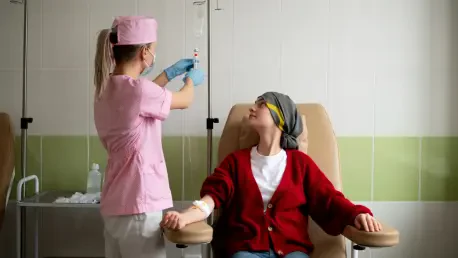Against the steady rise in cancer’s complexity and symptom burden, oncology nurses occupy a vantage point that allows early palliative care to move from a late-stage rescue to a standard, proactive layer of support woven throughout treatment, recovery, and survivorship. Their continuity at the bedside and in the clinic positions them to spot distress before it spirals, translate clinical plans into daily routines, and build trust that makes difficult conversations possible. Evidence has been clear that when palliative principles are integrated early, patients report less pain and anxiety, better alignment of care with personal goals, and fewer burdensome transitions. Yet practice still varies widely. Knowledge gaps, inconsistent expectations, and constrained workflows can slow referrals or reduce symptom attention to a checklist exercise rather than a tailored plan. Addressing these barriers requires a coherent strategy that blends education, culture, and leadership into practical steps nurses can put into motion.
The Nurse at the Center of the Cancer Journey
In most oncology settings, nurses are the constant among changing clinicians, treatment cycles, and settings of care, making them reliable guides through uncertainty and competing demands. That constancy equips nurses to calibrate interventions with real-time patient feedback: titrating medications after a rough night, reframing instructions when fatigue muddles recall, or surfacing priorities that charts may miss. Moreover, nurses extend care into families’ routines, translating symptom plans into mealtime, mobility, and sleep strategies. Because palliative care rests on aligning treatment with what matters to patients, the nurse’s ongoing presence and rapport make early alignment feasible, not aspirational. Early cues—new insomnia, appetite dips, or caregiver strain—signal when supportive measures should be added, not deferred. When nurses normalize palliative touchpoints alongside chemotherapy checks, care becomes smoother and less crisis-driven.
Experience amplifies this central role. Personal encounters with loss can deepen empathy and sharpen listening, while cumulative clinical practice strengthens confidence in escalating relief measures without waiting for deterioration. However, emotional labor is not inexhaustible. Organizations that provide debriefs, mentorship, and space to process difficult cases help keep compassion steady. Psychological safety allows nurses to raise concerns about unrelieved symptoms or unclear goals without fear of pushback. In such environments, empathy becomes a durable skill, not a depleting resource, and patients benefit from both technical proficiency and humane presence. Over time, this combination shifts unit culture: early palliative check-ins feel routine, interdisciplinary communication improves, and families come to expect a care plan that fits daily life, not just disease markers.
Correcting Misconceptions to Advance Timely Access
Misperceptions about palliative care still delay its benefits. Many patients and even clinicians equate palliative with “nothing more to do,” a framing that shuts down timely referrals and increases suffering that could have been prevented. Reframing palliative care as a quality-of-life partner to disease-directed treatment opens doors. Nurses play an outsized role in this reframing because they interpret the plan at the point of impact: during infusion, in the recovery room, on a fraught phone call at 2 a.m. By explaining that palliative measures run in parallel with tumor-focused therapies—reducing pain, easing breathlessness, clarifying decisions—nurses lower stigma and build acceptance. Language matters. Plain explanations anchored in everyday goals (“walk the dog,” “sleep through the night”) make the purpose concrete and compelling.
Correcting misconceptions also advances adherence. When distress wanes, patients complete more cycles, keep appointments, and tolerate rehabilitation better. This cause-and-effect becomes visible when nurses use teach-back to ensure understanding and circle back at defined milestones—diagnosis confirmation, regimen changes, post-discharge check-ins—to revisit needs. Involving families early further strengthens alignment, especially when decision-makers live outside the clinic and hear only fragments of information. Nurses can bridge that gap by proposing brief, structured conversations that invite values and trade-offs into the plan, then documenting preferences so teams act consistently. Over time, this normalizes palliative engagement across the trajectory, not as a late pivot, but as standard practice that scaffolds treatment, decision-making, and daily life from the start.
From Knowledge Gaps to Confident Practice
Uneven exposure to palliative concepts leads to inconsistent practice. Some nurses arrive fluent in symptom pharmacology and goals-of-care frameworks; others have learned informally, case by case. Standardized, continuous education closes that gap and supports reliable care at the bedside. Programs that blend symptom science with communication skills, cultural humility, and ethics build a rounded competence. Simulation and case debriefs turn abstract principles into muscle memory: rehearsing how to escalate opioids safely, how to respond to existential distress, or how to map a care plan to a patient’s daily realities. Mentorship then sustains progress between trainings, letting nurses test scripts, refine assessments, and align with team expectations. When education is protected time, not optional homework, confidence rises and variability narrows.
Attitudes shape whether that competence is used proactively. Viewing palliative care as integral to oncology—not a last resort—predicts earlier referrals, stronger symptom control, and steadier communication with families. Attitudes are malleable; they evolve through exposure to positive outcomes, feedback from mentors, and visible support from leadership. Unit champions can model practical behaviors: opening a visit with symptom priorities, checking understanding using plain language, and framing palliative consults as routine, not escalations. Recognition also matters. When performance metrics include relief of distress and timely goals-of-care documentation, nurses see palliative work valued alongside throughput and infection control. Over time, those signals shift norms, turning early palliative engagement from individual initiative into expected practice.
Systems, Roles, and Team Coordination
Even the best-trained nurse can be stalled by clogged workflows, ambiguous roles, or thin staffing. Systems determine whether good intentions become reliable routines. Clear protocols for identifying palliative needs, streamlined documentation that captures symptom trends, and fast access to specialist input reduce delays and duplication. When screening is embedded at predictable points—start of therapy, first evidence of progression, unplanned hospitalization—nurses do not need to argue for attention; the pathway prompts action. Reliable handoffs, shared care plans, and structured huddles ensure that what is learned at the bedside is visible to the whole team. These mechanics free nurses to practice at the top of license, focusing on assessment, coaching, and advocacy rather than chasing permissions across silos.
Leadership priorities reinforce these mechanics. Adequate staffing and protected time for palliative activities prevent rushed conversations and missed cues. Metrics that track symptom relief, readmissions, and patient-reported outcomes make progress tangible and guide resource allocation. Clarity about who initiates conversations, who documents preferences, and when to involve palliative specialists reduces uncertainty and builds trust among disciplines. In practice, this might mean nurses using agreed triggers to start brief goals-of-care check-ins, escalating to consults when criteria are met, and closing the loop by updating shared plans. As these steps become predictable, stigma fades and throughput paradoxically improves, because fewer crises derail schedules. The system, in effect, begins to enable the care philosophy it claims to value.
Turning Insight Into Routine Action
Translating insight into daily habits depends on small, repeatable moves anchored to clinical rhythms. Nurses can seed early engagement by pairing palliative screening with routine assessments, using the same cadence that tracks vitals or labs. Short, structured check-ins—two focused questions about pain and worry, a quick review of daily goals—create openings for targeted relief without lengthening visits. Clear documentation closes the loop, showing what was tried, what helped, and what needs revisiting. As patterns emerge, teams can adjust regimens, tweak schedules, and bring in specialists efficiently. Families feel the difference when expectations are reset in plain language and when next steps are predictable, even if the disease course is not. Over time, these moves build a stable backbone for compassionate, coordinated care.
The path forward had been practical and shared, not heroic or solitary. Education provided the scaffold, leadership supplied time and tools, and culture aligned attitudes with the mission of reducing suffering. Where roles were explicit and pathways consistent, nurses activated palliative care earlier and more effectively, and patients reported better symptom control and clearer plans. The next steps centered on standardizing training, embedding triggers at key milestones, and measuring patient-reported outcomes to guide improvement. By uniting these elements, teams converted palliative care from a late-stage signal into a steady companion to treatment, proving that quality-of-life work could coexist with aggressive therapy and that oncology nursing leadership remained essential to making that coexistence routine.









